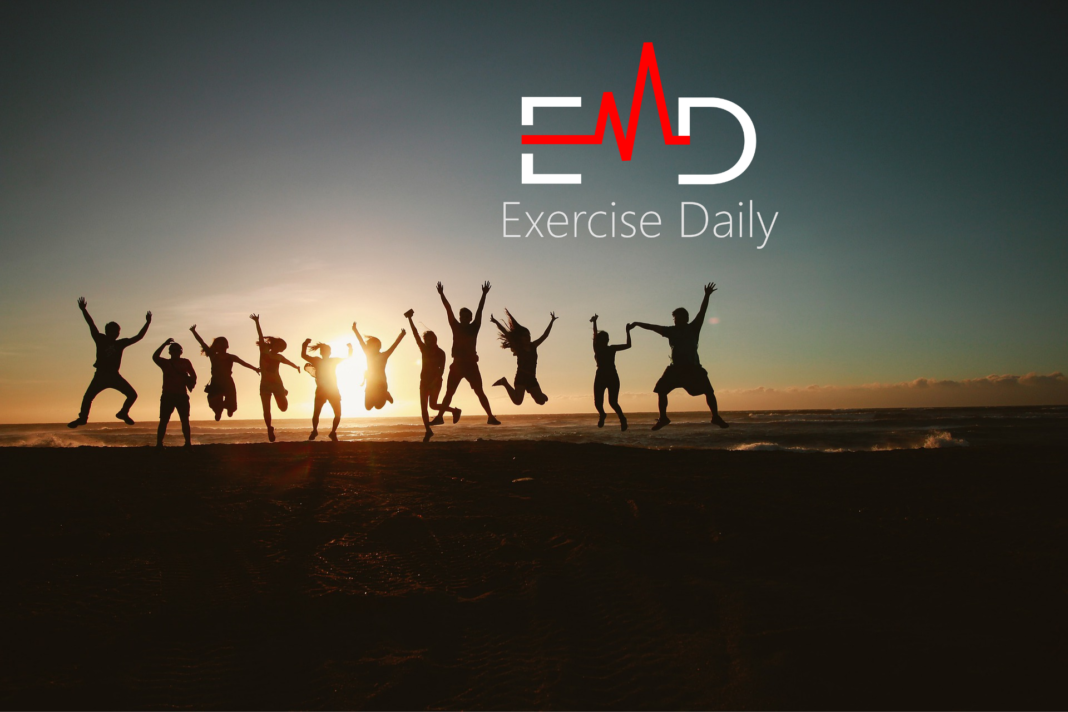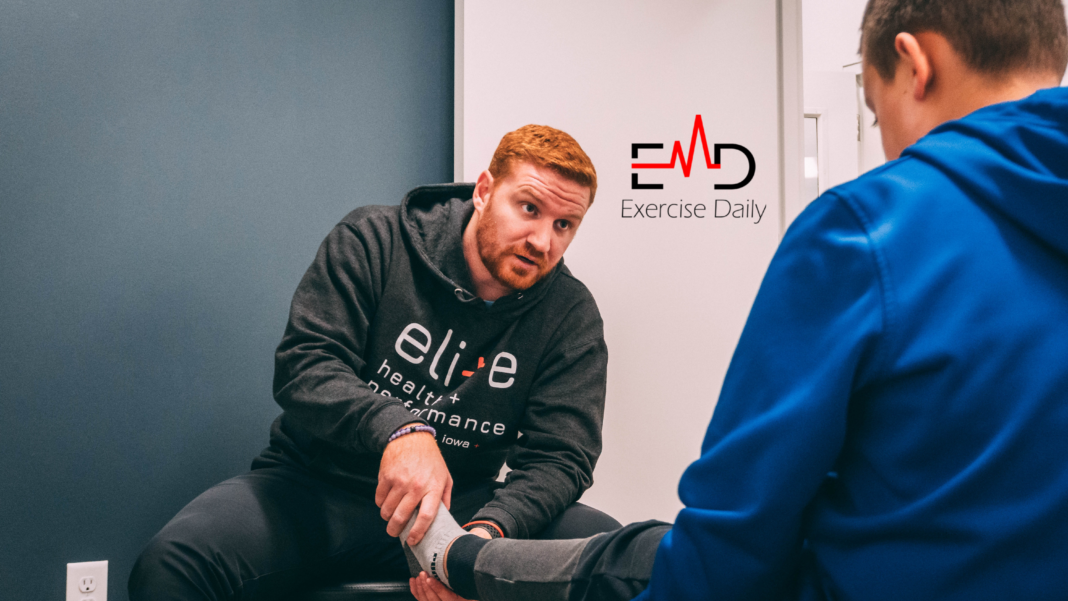Exercise Daily – Many of us take body balance for granted, but it is something that can be improved by anyone. Balance training workouts reinforce core muscles and increase flexibility, allowing you to walk more comfortably.
Anyone, regardless of age, will benefit from balance exercises. Athletes have discovered that it will help them become more strong. It is used by the elderly to avoid slip accidents and protect their freedom.
And fitness enthusiasts know how it will help them get more out of their routines and their daily lives. In reality, just getting around in life effectively necessitates strong postural alignment and equilibrium.
What is Body Balance?
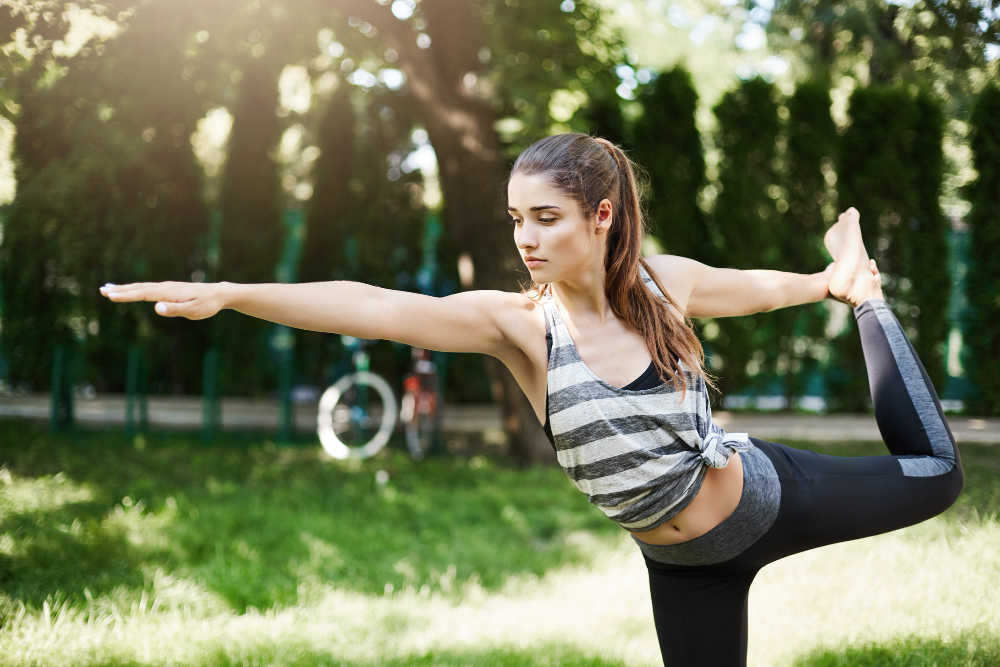
You need strong coordination to do just about everything, including driving, getting out of a chair, and bending down to tie your shoes, even though it doesn’t happen to you.
Strong legs and the ability to maintain your balance make all the difference in those and countless other activities you perform on a daily basis.
Exercises that improve the muscles that support you stay balanced, such as your legs and core, are used in balance training. These exercises will help you gain more flexibility and avoid falling.
Balance movements, including any of the more difficult yoga poses, can be exhausting. Others are as plain as staying for a few seconds on one knee.
You should also use devices like a Bosu half-circle balancing ball or a balance board that you can use when playing video games to allow your body to stabilize itself.
Why is Body Balance Exercises Important?
Balance is an essential part of every movement we do. We are, in reality, keeping equilibrium while standing on two feet, even though we aren’t sure of it.
When you watch a child learn to stand, you’ll see that the task of standing is the most difficult part of the process, not the lack of leg or core power.
We are not only working the often-overlooked stabilizer muscles as we balance; we are also enhancing joint flexibility and internal concentration.
Our vestibular and musculoskeletal processes, as well as our proprioception, will be challenged by balance-focused practices.
Balance is another important trait that we start to forget when we get older, so it’s important to keep it in check. It’s a situation where you either use it or lose it.
So, let’s have a look at some of the body balance exercises benefits:
#1. Reversing the Loss of Balance that Comes with Getting Older
Our ability to balance deteriorates as we get older. The amount of time a person can stand on one leg, for example, is a significant indicator of longevity.
Balancing is a difficult skill that requires the coordination of the head, muscles, and portions of the inner ear. The synchronization between these three mechanisms will deteriorate with time if you don’t exercise and maintain equilibrium, making it more difficult for you to remain upright and maintain good posture.
Training, on the other hand, leaves everything functioning as if your body is far younger, allowing you to avoid any of the balancing problems that come with aging. Dance is a fantastic way to improve balance.
#2. Prevents Falls
Body balance exercises assist you with better controlling your core and limbs. Not only does this make you walk more gracefully, but it also lets you from falling.
When you have strong balance, you can adjust to changes in body shape more easily, adapting on the fly to sudden height changes or rocks you didn’t notice underfoot.
Fall prevention not only protects you from physical harm such as broken hips, but it also increases your self-esteem.
You no longer have to be concerned with falling any time you leave the house if you have a strong balance. Even if you’re young, gaining this unexpressed knowledge will help you feel more at ease with your surroundings.
You will respond more easily to falls while your balancing mechanism is functioning well, making it less likely that you will crash.
#3. Building a Better Body Posture
A normal person can have a bad posture as a result of poor body form, a focus on a limited set of movement habits, and an increasingly sedentary lifestyle.
Hunched knees, anterior pelvic tilt, and decreased upper-back strength are common disabilities for many people. Part of the dilemma is that we don’t do the requisite balancing workouts to combat the negative consequences of our way of life as a population.
Improving one’s balance is beneficial to one’s stance. It shows you how to move in both static and dynamic positions, which are both inherent to your human body. Excellent balance necessitates excellent posture; the two are inextricably linked.
#4. Helping You Heal Faster From an Injury
Many people who engage in physical training sustain injuries, especially to their legs and ankles. Many of what we know about balance arises from studies of people who have suffered from lower-leg injuries.
The findings of the study are intriguing: the more balancing drills people do, the better they recover from their injuries. Balance drills can also help to discourage accidents from occurring in the first place.
#5. Enhanced Coordination
Humans, like other animals in their natural environments, should have excellent coordination. Although, thanks to the new civilization, we are no longer forced to do many of the physical duties that we may have been forced to perform in the past.
We scarcely have to exercise balance because of our sedentary lifestyles. Our general lack of teamwork is one of the consequences of this growth.
Body balance exercises, particularly dynamic balance drills such as balance walking on railings, aid in the relegation of balance to the category of reflexive reaction.
Eventually, if you have a strong balance, you should be able to respond intuitively to almost any situation without having to worry about it.
#6. Making the Most of Your Exercise Time
The majority of people who go to the gym to lift weights waste a lot of time hanging around doing nothing while their muscles heal from the previous set.
If you’re a busy person who wants to make the most of your life, it’s a smart idea to figure out how to make the most of the time in between sets.
Since balance exercises are low-intensity and do not impede muscle recovery, they are suitable for such situations.
#7. Improving the Running Technique
The bad running technique can result in a variety of injuries, ranging from shin splints to hip pain to bad knees. Poor form is the result of a lifetime of not having to move every day and not knowing one’s body’s complex role.
To compensate for their lack of coordination, people with weak balance often grow a less-than-ideal gait.
Unconsciously, dynamic balance exercises will assist you in determining the center of gravity. When you ever do go running, you’ll be more confident in taking longer runs, opening up your legs, and pushing your feet forward.
You’ll also discover how to swing your arms to combat the movement of your hips when striding, reducing the pressure on your chest, with additional balancing exercises.
#8. Improving Your Muscular Strength
Your muscles will get stronger as a result of your balance, and their power production will soon increase. The greater the energy they can exert, the faster you can run and the higher you can jump.
Balance is beneficial in almost any sport that needs fast, sharp, and strong movements, such as boxing, as well as in the development of overall functional ability.
Effective Body Balance Exercises
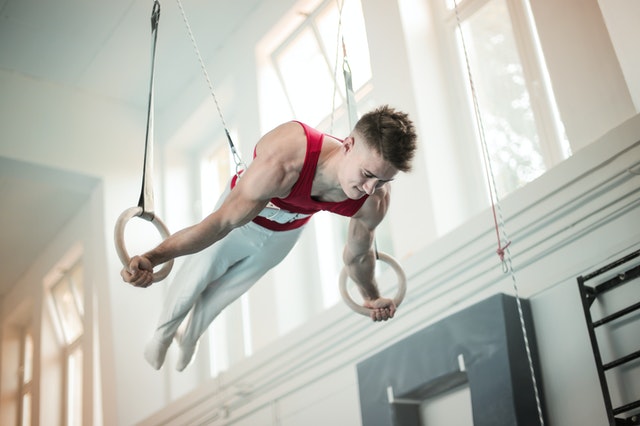
Static and dynamic balances are the two forms of balance.
Dynamic balance refers to the ability to step outside of one’s body’s base of support while retaining control of one’s posture.
However, the tendency to keep the body’s center of mass within its base of support is known as static balance.
Both forms of balance are essential, and they can both be improved with specific exercises. So, the following are some of the effective balance exercises:
#1. Single-Leg Dead Lift
This move, whether performed with or without dumbbells, strengthens your hamstrings and glutes while also challenging your balance and triggering your abdominal wall. Here is how to do it:
- Stand with your feet close together on either the ball side of a BOSU or the floor and place much of your weight on your right foot.
- Slowly drop your body to the ground while raising your left leg behind you while staring at a focal point on the floor in front of you. Swing your hands into the floor while keeping your neck neutral.
- When your back is parallel to the ground, you could come to a complete stop. Keep the right knee as soft as possible.
- When you slowly rise back up and drop your back foot to the floor, squeeze your hamstrings, glutes, and abs.
- Change sides. 8 deadlifts on either side is a good target.
#2. Squats on BOSU
When you combine the simple squat with the unstable surface of a BOSU, your body can learn to engage all of the right muscles at the right time. Here is how to do it:
- With your feet hip-width apart, stand on the ball side of a BOSU.
- Sit back into a squat posture, sinking your weight into your feet.
- When you press yourself back up to standing, engage your glutes and hamstrings. 8–10 reps are a good number to aim for.
#3. Tree Pose
Tree pose may be done on the board, with a folded mat, or on a BOSU. It reinforces your ankles while also improving your body balance and engaging your core. Here is how to do it:
- Standing with your feet close, your back tall, and your arms outstretched is a good position to be in. You can use any side of a BOSU, ball, or flat, whether you’re using one.
- Raise your left foot slowly on the side of your calf and balance solely on your right foot.
- Slowly raise your arms overhead to form the tree’s branches. Switch legs after 30 seconds of maintaining.
Body Balance FAQs
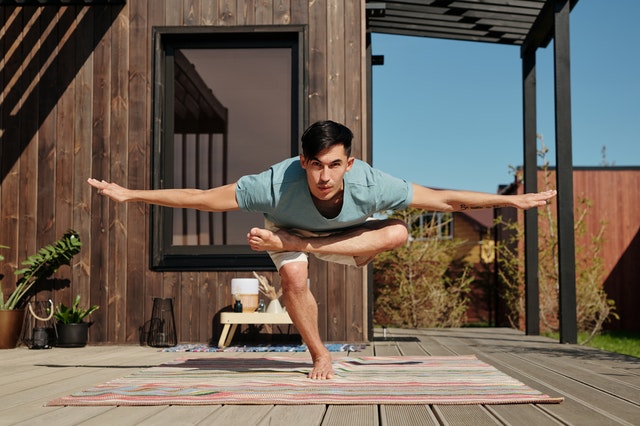
What Vitamin is Good for Balance?
Vitamin D appears to play a role in the cortical processes of postural balance, according to evidence.
Does Walking Improve Balance?
Walking, weight training, and individual exercises, in conjunction, can improve balance and avoid falls, particularly in older adults. Walking helps to improve lower-body stability, which is a crucial component of maintaining proper balance.
How Can I Improve My Gait Balance?
Lift your legs into your chest when lying flat on your stomach. This workout is designed to strengthen your core muscles, so concentrate on making your tummy do the job!
Standing on one leg when holding a stable chair or desk for support is a good way to start. Hold for 5-10 seconds before switching legs and repeating for a total of 10 reps.
Does Body Balance Burn Fat?
BodyBalance was found to help decrease body weight, increase back strength, enhance endurance, and alleviate anxiety in a study conducted by Roehampton University in the United Kingdom. It has also been shown to improve posture and gait rhythm, all of which are good indicators of improved vitality.
Final Verdict
Balance, along with cardiovascular, strength, and flexibility, is one of the four components of fitness. For any form of movement, good balance is needed.
Balance exercises have been shown in studies to help prevent slips and fall-related accidents as we age. Balance training can also help to prevent ankle fractures, according to research.
There are no concrete rules for balance training, unlike for cardio and strength training. Balance exercise is applicable to both age ranges and health levels, according to the American Heart Association. It is recommended that older people who are at risk for falling do it three or four days a week.
Body Balance training would not have to be a stand-alone activity. You should quickly add it into your daily fitness regimen, and it plays a role in other aspects of your workout. When doing shoulder presses or arm twists, try balancing on one foot.
Balance is also emphasized in single-leg squats or squats that transition to a leg lift. Try to stretch the quadriceps without leaning against a wall or sitting in a chair.


